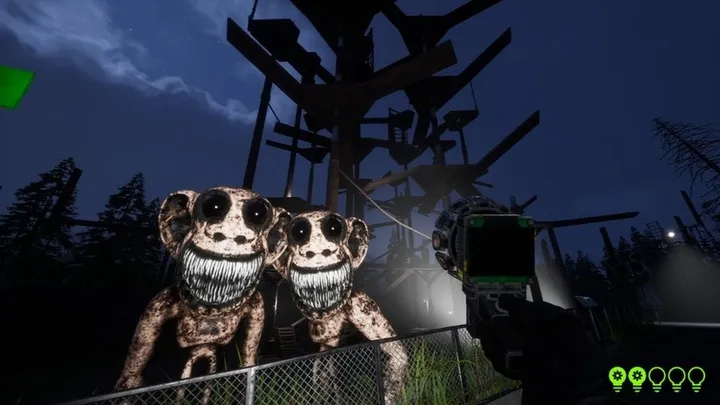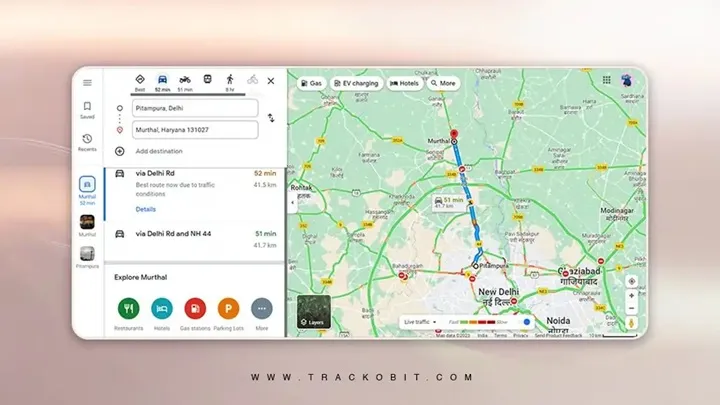Introduction
Zoonomaly is a game that thrives on tension, unease, and the art of discovery. Beyond its core survival mechanics and encounters with anomalies, one of the most intriguing aspects lies in its maps. Unlike traditional horror games where environments are static and predictable, Zoonomaly introduces spatial distortion—an ever-changing labyrinth where rooms shift, hallways loop, and hidden areas reveal themselves only under certain conditions. For new players, this design can feel overwhelming; for veterans, it becomes a playground for secrets and strategy.
This guide will serve as a deep dive into the world of map exploration within Zoonomaly. From uncovering hidden paths to unlocking secret rooms, to mastering techniques for navigating distorted spaces, we’ll cover everything you need to know. Whether you’re a cautious beginner or a thrill-seeking explorer, learning these secrets not only enhances your chances of survival but also uncovers much of the lore hidden behind the game’s mysterious architecture.
1. Understanding the Nature of Zoonomaly’s Maps

- Zoonomaly doesn’t feature static maps. Instead, each session shifts layouts, creating unpredictable corridors and spaces. This ensures replayability but also raises the difficulty in navigation.
- Spatial distortion plays a central role. A door that once led to a safe room may later guide you into a high-risk anomaly zone. Understanding this mechanic is the first step to exploration mastery.
- Many players mistake this randomness as pure chaos. However, subtle cues exist in the environment that hint at changes. Lights flicker differently, floor textures alter slightly, and ambient audio shifts—these are tells that the map is shifting.
2. The Psychology of Exploration in a Shifting World
- Exploration in Zoonomaly isn’t only about finding resources; it’s about managing fear. When spaces change, players often panic, leading to poor decisions. Remaining calm lets you notice patterns.
- The distorted maps deliberately disorient players, evoking fear of the unknown. Yet, if you treat exploration as problem-solving rather than a gamble, you’ll gradually feel in control.
- Understanding that not every door needs to be opened is crucial. Curiosity fuels discovery, but over-exploration can drain resources or expose you to anomalies unnecessarily.
3. Recognizing Environmental Cues
- Lighting Patterns: Rooms with slightly dimmer or warmer tones often conceal hidden entrances. Players who pay attention to bulb flickers and shadow inconsistencies are rewarded.
- Sound Design: Audio cues—whispers, echoes, or low-frequency hums—signal nearby distortions. Following these sounds can lead to secret rooms.
- Texture Anomalies: Walls that look slightly “out of sync” with their surroundings (odd cracks, repeating textures) may be indicators of hidden paths.
4. Hidden Paths and How to Access Them
- Hidden paths often masquerade as ordinary walls. Unlike typical games where “pressing interact” reveals them, Zoonomaly requires observation. Standing close to certain walls may distort the audio or camera perspective, hinting at interactivity.
- Some paths only open after performing specific actions, like turning off your flashlight, waiting in silence, or triggering anomalies elsewhere. This encourages experimentation.
- Master explorers memorize “likely” locations across runs. Even though layouts change, hidden paths tend to appear in structurally similar regions, like corners or behind staircases.
5. Secret Rooms and Their Rewards

- Secret rooms are among the most rewarding discoveries in Zoonomaly. They provide resources, lore fragments, or safe spaces away from anomalies.
- Common rewards include rare crafting components, sanity-restoring items, or hidden logs that explain the origins of the anomalies.
- However, some rooms are traps. They appear as “safe” but trigger anomaly encounters once entered. Learning to distinguish genuine safe rooms from lures requires trial and error.
6. Navigating Without a Traditional Map
- Unlike many survival horror games, Zoonomaly doesn’t offer a mini-map. Instead, you must rely on environmental memory, sound, and visual landmarks.
- Using auditory breadcrumbs—like intentionally dropping an item—can help trace your path if the layout loops.
- Players should adopt a “mental mapping” strategy. Divide areas into quadrants and assign mental labels (e.g., “red light corridor,” “metallic hum hallway”). This helps maintain orientation in distortion-heavy zones.
7. Spatial Loops and How to Break Them
- Spatial loops are recurring sequences where hallways or rooms repeat endlessly. Breaking these requires specific actions: waiting in silence, retracing steps, or interacting with hidden triggers.
- Observing anomalies within loops is vital. Some anomalies only appear during loops and act as clues for escape.
- Patience is essential. Players who panic in loops often miss subtle escape mechanics like crouching under unseen gaps or turning off light sources to reveal exits.
8. Exploration Strategies for Survival
- Adopt the “three-door rule”: never open more than three unfamiliar doors in a row without re-establishing orientation. This prevents deep disorientation.
- Use sound markers. Knocking or interacting with objects creates distinct audio cues, which can serve as anchors when retracing steps.
- Travel light. Carrying too many items slows movement, making exploration riskier in shifting environments where quick escapes are essential.
9. Lore Hidden in Maps
- Exploration isn’t just about survival—it reveals lore. Many secret rooms contain cryptic writings, environmental storytelling, or audio logs that explain the nature of anomalies.
- Distorted areas sometimes show glimpses of past events: children’s drawings on walls, bloodstains fading in and out of existence, or echoes of conversations long gone.
- The deeper you explore, the more you uncover connections between anomalies and the facility itself. These fragments slowly build into a narrative puzzle that enriches the game world.
10. Advanced Exploration Techniques

- Veteran players experiment with “intentional disorientation.” By purposely entering loops or interacting with anomalies, they access otherwise unreachable areas.
- Time-based secrets exist. Some doors only open if approached after lingering in an area for a set duration. Keeping track of time enhances discovery.
- Cooperative play (if available in updates or mods) adds another layer—two players marking areas differently may uncover more secrets than one could alone.
Conclusion
Zoonomaly’s map system is unlike any other. Instead of serving as a static backdrop, it becomes a living entity—one that shifts, deceives, and rewards those who engage with it thoughtfully. For players willing to pay attention, every flicker of light and every echo can be a clue leading to hidden paths, secret rooms, or lore fragments. By mastering environmental cues, practicing disciplined exploration, and embracing the distorted architecture, you not only increase your survival chances but also unlock the deeper mysteries that Zoonomaly conceals.
Exploration in Zoonomaly is less about “where to go” and more about “how to perceive.” And once you begin to see the game’s world not as random chaos but as a layered puzzle, the experience transforms from fear into fascination.

















